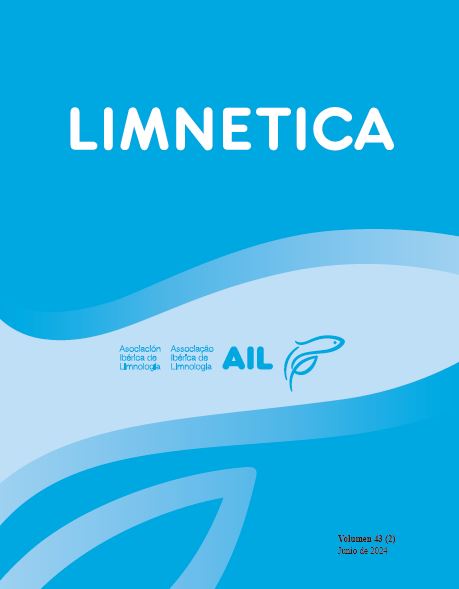Interacting effects of latitudinal and elevational gradients on the distribution of Iberian inland fish
Resumen
Unraveling the effects of latitudinal and elevational gradients on species distribution has been a central topic in biogeography for decades. However, few studies have evaluated the effects of the interaction between both gradients on species distributions. The main goal of this study was to evaluate the interaction of latitude and elevation in a freshwater context using a regional dataset of Iberian inland fish species. For this purpose, we compiled occurrence data for the 15 most widespread (i.e., present in multiple basins) Iberian fishes. We used generalized linear models including elevation, latitude, their quadratic terms, the interaction between the two gradients, and the basin as sources of variation. Results revealed contrasting species-specific distribution patterns with differing importance of the elevation and latitudinal gradients. Latitude was particularly important in explaining the distribution patterns of Salmo trutta, while the distribution of diadromous species and invasive Gambusia holbrooki or Lepomis gibbosus was mainly mediated by elevation. We detected significant interaction between elevation and
latitude for 11 out of the 15 studied species. Consequently, Iberian fish species occupy different elevational niche positions depending on latitude. For example, Salmo trutta and Oncorhynchus mykiss occupy intermediate and even lower reaches in the northernmost areas. However, their occurrence probability decreases at lower latitudes, despite they can occur in elevated areas in these regions (e.g., Baetic Mountains). Finally, we discuss the potential effects of climate change on distribution patterns of the Iberian fish species studied.
Descargas
Publicado
Número
Sección
Licencia
Los autores que publican en esta revista están de acuerdo con los siguientes términos:
- Limnetica está bajo una licencia de Creative Commons Atribución-NoComercial 4.0 Internacional.
b. Los autores pueden establecer por separado acuerdos adicionales para la distribución no exclusiva de la versión de la obra publicada en la revista (por ejemplo, situarlo en un repositorio institucional o publicarlo en un libro), con un reconocimiento de su publicación inicial en esta revista.
c. Se permite y se anima a los autores a difundir sus trabajos electrónicamente (por ejemplo, en repositorios institucionales o en su propio sitio web) antes y durante el proceso de envío, ya que puede dar lugar a intercambios productivos, así como a una citación más temprana y mayor de los trabajos publicados (Véase The Effect of Open Access) (en inglés).


